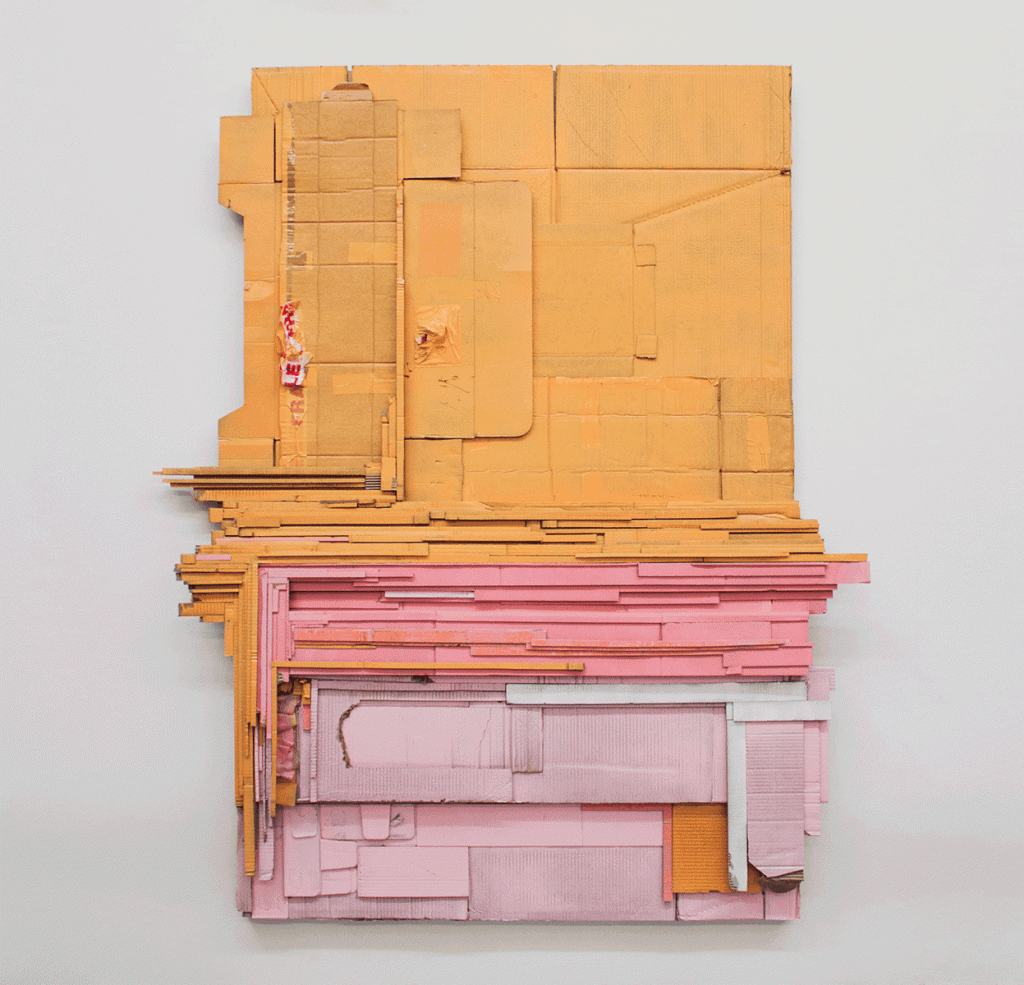Selected Media
Art GuidePatrizia Biondi’s intricate, quasi-architectural constructions, built out of salvaged cardboard, arise from her interest in contemporary socio-political issues, with a particular emphasis on the relationship between the rapidly changing nature of society and the establishment of global finance as culture.
Patrizia Biondi’s intricate, quasi-architectural constructions, built out of salvaged cardboard, arise from her interest in contemporary socio-political issues, with a particular emphasis on the relationship between the rapidly changing nature of society and the establishment of global finance as culture.
The packaging materials ask the viewer to ponder the notion that contemporary subjectivities are engendered within the realm of consumerism, therefore social relations are increasingly becoming based on the values of economic ambition and competitiveness – which manifest through the ownership and worth of objects. Through this process, the humanistic values of solidarity and empathy, which were once considered the connective tissue of society, are gradually being abandoned and, as a result, traditional concepts of community and the common good are rapidly disappearing.

Our attitudes towards the present environmental crisis, epitomised by the obsolescent cardboard, are part and parcel of this dialogue, as Biondi’s objects lyrically emphasise the criticality of the issue at hand and plead that it be acted upon in earnest.
The materials employed are integral to this narrative, as consumerism, storage, global transport, aesthetic appeal and, ultimately, obsolescence, inevitably point to packaging. Therefore, Biondi makes sure that the packaging detritus employed retains all the characteristics that it was found in, thus rendering the artwork indexical. The marks, the rips, the packing tape, the delivery labels and all the elements that form the lexicon of commerce are left visible or only partially covered by the paint, documenting the entrenchment of economy and consumerism within culture and turning the objects into anthropological relics.
As the making process involves states of cutting and fragmentation, the artworks suggest aspects of fracturing of the human condition, while the melting of the paint seems to question the proxies of art within a global economy that has subsumed every aspect of life – public, private and cultural. However, the gentle and poetic beauty of Biondi’s forms is reminiscent of utopian architecture, therefore evoking ideas of reconstruction and conveying the possibility of reframing our social discourses, with the underlying hope of forging brand-new identities.
Consequently, these artworks represent reality and potential, light and dark, entropy and rebirth. Within this conversation, Biondi views her artistic practice not only as a location of contemporary discourses and future possibilities, but also a site of protest. The endless sifting through discarded rubble, the subsequent cleaning, treating, painting, cutting, slicing, layering and constructing of the salvageable parts, result into a substantial investment of time and labour – the kind of commitment that subverts a contemporary economy that privileges fast, disposable production and efficiency. Here, the avenues to engender alternative, non-alienated subjectivities can be critically explored through the idea of “slow making”, resulting in what Biondi refers to as her “dissident objects”.
Patrizia Biondi was the recipient of the 2018 Artereal Gallery Mentorship Award. Awarded each year to one graduating Bachelor of Visual Arts Honours student from Sydney College of the Arts, the recipient of the award is mentored closely by the Artereal Gallery team for one year and given the opportunity to exhibit their work at the gallery. The Artereal Gallery Mentorship Award allows the recipient opportunities to seek advice and guidance pertaining to and relating to her professional development, the development of artistic practice, exhibition opportunities, art prizes, residencies and artist profiling opportunities.

